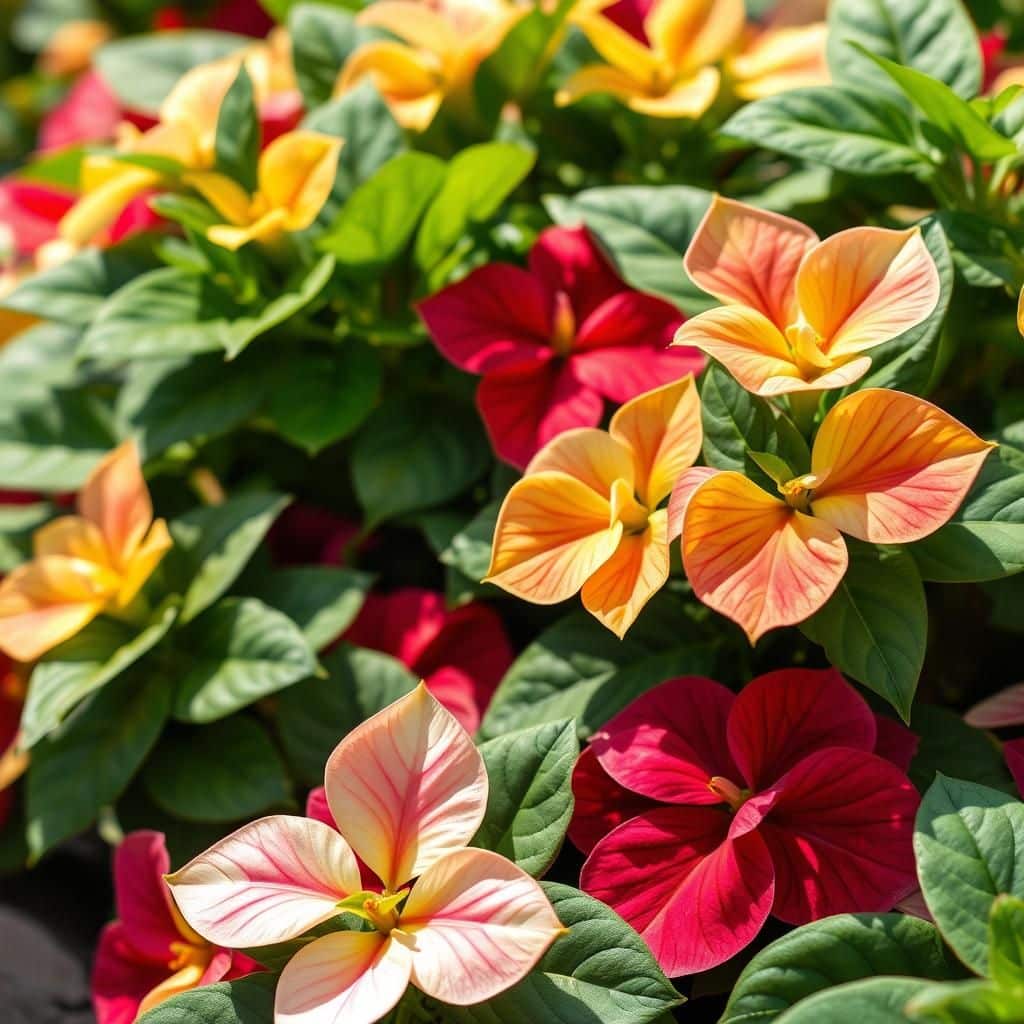Do Impatiens Like Sun or Shade? The Ultimate Guide to Successful Planting

Impatiens are cherished for their vibrant blooms and ability to bring life to any garden. However, a common question among gardeners is whether these beautiful plants prefer sun or shade. Understanding the light requirements of impatiens is essential for successful planting and thriving growth. This ultimate guide will explore the ideal conditions for impatiens, including their sun and shade preferences, how different lighting affects their health, and tips for ensuring a lush and colorful display in your garden. Whether you’re a novice or an experienced gardener, this guide will equip you with the knowledge needed for successful impatiens cultivation.
Do Impatiens Prefer Sun or Shade?
Impatiens are renowned for their vibrant blooms and versatility in garden settings, but their light requirements can vary significantly depending on the specific type. Generally, most impatiens, particularly the common variety (Impatiens walleriana), thrive best in shade or partial shade, as direct sunlight can scorch their leaves and stunt their growth. However, some newer varieties, such as the SunPatiens, have been bred to tolerate full sunshine, making them suitable for brighter locations. Understanding the needs of your specific type of impatiens can lead to a more flourishing and colorful garden.
Light Requirements of Impatiens
The majority of impatiens prefer low to moderate light, making them ideal for shady garden spots or areas with dappled sunlight. In conditions of too much sun, the leaves can become crispy and brown, resulting in a stunted growth or less prolific flowering. Proper understanding of light exposure will ensure that impatiens can display their full potential.
Differences Between Impatiens Varieties
There are several types of impatiens, each with different light preferences. The classic Impatiens walleriana does best in shade, while SunPatiens and other hybrid varieties can thrive in direct sunlight. Gardeners should carefully select varieties based not only on their bloom color but also on their specific light requirements to ensure optimal growth and flowering.
Effects of Too Much Sun on Impatiens
When exposed to excessive sunlight, impatiens can suffer from leaf scorch, which manifests as browning edges, wilting, and a decline in overall health. Moreover, flower production can decrease significantly, leading to fewer blooms throughout the growing season. Therefore, providing appropriate shading is crucial for maintaining robust plants.
Ideal Growing Conditions for Impatiens
To cultivate thriving impatiens, aim for locations with well-draining soil and rich in organic matter, paired with a sheltered position that shields them from harsh afternoon sun. Adding mulch can help retain moisture in the soil, which is crucial for these water-loving plants. Keeping them consistently watered will also ensure that they flourish in their preferred environment.
See also:
Acclimatizing Impatiens to Sunlight
If you wish to expose shade-loving impatiens to more sunlight, it is advisable to acclimatize them gradually. Start by placing them in a partially sunny spot or during the cooler hours of the day, which allows the plants to adapt without suffering from stress. Over time, they may adapt to more light, depending on the specific variety.
| Variety | Sunlight Preference | Flowering Capability |
|---|---|---|
| Impatiens walleriana | Shade | High |
| SunPatiens | Full Sun | Very High |
| Impatiens balsamina | Partial Shade | Moderate |
| New Guinea Impatiens | Partial Shade to Sun | High |
| Busy Lizzie | Shade | High |
Can impatiens take hot afternoon sun?
:max_bytes(150000):strip_icc()/shade-tolerant-impatiens-flowers-2132141-1-bd0a4240329940a2896d7a64282e67e1.jpg)
Impatiens, also known as busy lizzies, are popular garden plants known for their vibrant flowers and lush foliage. However, when it comes to exposure to hot afternoon sun, it is essential to understand how this affects their growth and health.
Generally, impatiens prefer partial shade or indirect sunlight, especially during the heat of the afternoon. Excessive direct sunlight can lead to leaf scorch, wilting, and overall stress on the plants. In hot climates or during summer months, the intense sunlight can be detrimental, causing the blossoms and foliage to fade or burn.
To care for impatiens in areas that receive prolonged afternoon sunlight, it may be essential to take precautionary steps to help them thrive.
Understanding Impatiens Light Requirements
Impatiens thrive best in medium to bright shade. Direct morning sun is tolerable, but the strong rays of the afternoon sun can lead to serious stress for them. Here are some key points regarding their light requirements:
See also:
- Preferably, provide at least 4-6 hours of indirect sunlight.
- Areas with dappled light from trees or other structures are ideal.
- In a garden with full sun exposure, consider planting them in shaded areas or using larger plants as a buffer.
Signs of Heat Stress in Impatiens
When impatiens are exposed to excessive heat or sunlight, they may show several signs of stress. Being aware of these signs can help in taking immediate action to protect the plants:
- Wilting: Leaves may droop and appear lifeless.
- Leaf Scorch: Brown edges or spots on leaves, indicating they are burning.
- Faded Flowers: Pinking or fading of colorful blossoms, losing vitality.
Methods to Protect Impatiens from Hot Sun
If you live in a region where impatiens are subjected to hot afternoon sun, there are several methods to help protect them:
- Plant Shade-Providing Species: Utilize taller or bushier plants nearby to create shadows.
- Use Shade Cloth: Employ shade netting or cloth during peak sun hours to soften the impact of sunlight.
- Regular Watering: Keep the soil consistently moist to help the plants cope with heat stress.
Best Soil Conditions for Thriving Impatiens
Proper soil conditions contribute significantly to the health of impatiens, especially when managing heat stress. Consider the following soil care strategies:
- Well-Draining Soil: Ensure good drainage to avoid root rot.
- Organic Matter: Incorporate compost or organic fertilizers to enhance soil structure.
- Maintain Moisture: Regularly check soil moisture levels to keep them hydrated but not overwatered.
Choosing the Right Location for Impatiens
Selecting the ideal location for planting impatiens is crucial for their success in sunny climates. Points to consider include:
- Observe Sun Patterns: Evaluate how the sun moves across the planting area throughout the day.
- Proximity to Taller Plants: Plant near natural shade sources to buffer them from harsh sunlight.
- Avoid West-Facing Exposures: Avoid placing them in areas that receive full western sun exposure in the afternoon.
Questions from Our Readers
Do impatiens prefer sun or shade?
Impatiens are known for their shade-loving characteristics. They thrive best in partial to full shade, making them ideal for gardens with limited sunlight. Although they can tolerate some morning sun, excessive sunlight can lead to wilting and reduced bloom.
Can impatiens grow in full sun?
While impatiens can tolerate morning sun, they generally do not perform well in full sun conditions. Extended exposure to direct sunlight can cause the leaves to scorch and the flowers to fade quickly, so they are best suited for shadier environments.
See also:
What conditions are best for growing impatiens?
The best conditions for growing impatiens include moist, well-drained soil and a location that receives filtered sunlight or partial shade. Providing consistent moisture and avoiding direct sunlight will help these plants flourish and produce vibrant blooms.
Can impatiens survive in low light?
Yes, impatiens are particularly suited for low light conditions. They can grow well in areas that receive only dappled light or very limited sun. This adaptability makes them a favorite choice for shaded corners of gardens and landscapes.
https://youtube.com/watch?v=lu_TpBYKT04
If you want to read more articles like Do Impatiens Like Sun or Shade? The Ultimate Guide to Successful Planting, we recommend you check out our Plants category.
Leave a Reply
Related Articles